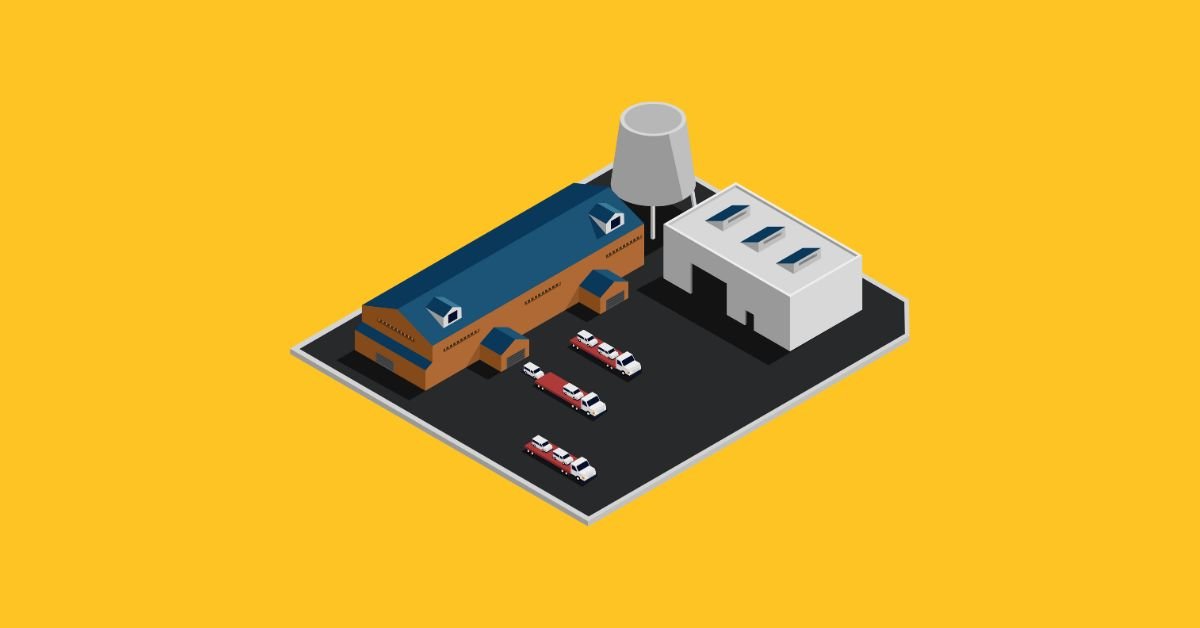In today’s digital world, a website is essential for business success. Custom website development creates a unique online presence tailored to your brand and goals. Unlike templates, it offers complete design control, user-friendly navigation, and custom features to drive results. A well-developed website is also scalable, growing alongside your business. Ready to get started?
The Custom Website Development Process: A Step-by-Step Guide
The custom website development process might seem complex at first glance, but it can be broken down into clear steps. Here, we’ll unpack each stage, giving you a roadmap to navigate and achieve your website goals.
Step 1: Initial Consultation & Planning
The first step involves an initial consultation with a web development agency. This meeting is crucial for establishing a strong foundation for your project. Here’s what you can expect:
Goal Setting: You’ll discuss your business objectives, target audience, and the overall vision for your website. This includes identifying what you want visitors to achieve on your site (e.g., making a purchase, contacting you, subscribing to a newsletter). By understanding your goals, the development team can tailor the website to deliver the desired results. (Consider mentioning “custom website development services” here if it flows naturally)
Planning and Scoping: The team will work with you to define the website’s features and functionalities This might include elements like contact forms, e-commerce capabilities, or a blog section. By outlining the scope of the project upfront, you can ensure the final website aligns with your needs and budget.
Timeline Creation: Establishing a realistic timeline for the development process is important. This will depend on the complexity of the website and the resources available.
By the end of this initial phase, you’ll have a clear understanding of the project roadmap and how your custom website development journey will unfold.
Step 2: Design & User Experience (UX)
Once the goals and functionalities are established, it’s time to bring your website to life visually! This step focuses on design and user experience (UX), ensuring your website is not only aesthetically pleasing but also intuitive and user-friendly.
User-Centered Design: The development team will prioritize user-centered design principles. This means crafting a website that caters to your target audience’s needs and expectations. Easy navigation, clear calls to action, and a visually appealing layout are all crucial for a positive user experience.
Collaborative Design Process: You’ll work closely with designers to create a website that reflects your brand identity and resonates with your target audience. This might involve mood boards, color palette selection, and logo integration. The goal is to create a cohesive visual experience that aligns with your brand message.
Wireframing & Prototyping: To visualize the website’s layout and functionality before diving into coding, designers will create wireframes and prototypes. These are essentially blueprints that allow you to provide feedback and iterate on the design before development begins. This ensures the final product meets your expectations and delivers an optimal user experience.
Step 3: Development
This is where the magic happens! Building your website involves two key areas of development: front-end and back-end.
Front-End Development: The front-end focuses on the visual elements that users directly interact with, bringing your website’s design to life. This includes aspects like:
User Interface (UI): The UI is what users see and interact with, such as menus, buttons, and images. Developers translate the design mockups into functional code, ensuring a visually appealing and user-friendly interface.
Responsiveness: In today’s mobile-first world, it’s crucial for your website to adapt seamlessly across different devices (desktops, tablets, smartphones). Front-end developers ensure the website displays correctly and delivers an optimal user experience regardless of the screen size.
Back-End Development: While the front-end focuses on visuals, the back-end is the engine that powers your website’s functionality. This includes:
Databases: Websites often store information like user data, product details, or blog posts. Back-end developers create and manage databases to ensure this information is securely stored and accessible when needed.
Content Management System (CMS): A CMS allows you to easily update your website’s content without needing coding knowledge. Developers integrate a user-friendly CMS into the back-end, giving you control over your website’s content.
Server-Side Scripting: Websites often require complex functionalities that go beyond static content display. Back-end developers use server-side scripting languages to handle actions like user logins, form submissions, or e-commerce transactions.
Choosing the Right Technology: The development team will select the most appropriate programming languages and frameworks based on your website’s specific needs and functionalities. This ensures optimal performance, scalability, and security for your website.
By the end of this stage, you’ll have a fully functional website, ready for the next step: populating it with high-quality content!
Step 4: Content Creation
The best website design can only take you so far. To truly engage your audience and achieve your goals, you’ll need high-quality, informative content. Here’s why content creation is crucial in the custom website development process:
Engaging Users: Compelling content keeps visitors engaged on your website. This could include informative blog posts, product descriptions that resonate with your target audience, or clear calls to action that prompt visitors to take the desired action (e.g., subscribing to your newsletter, making a purchase).
SEO Optimization: Search Engine Optimization (SEO) helps your website rank higher in search engine results pages (SERPs). By incorporating relevant keywords and crafting content that provides value to users, you can attract organic traffic to your website.
Building Brand Authority: Well-written content establishes you as an expert in your field. Sharing valuable insights and solutions to your target audience’s problems builds trust and positions your brand as a reliable source of information.
The Content Creation Process
This stage may involve collaborating with a content writer or copywriter to develop content that aligns with your website’s goals and target audience. Here are some key aspects to consider:
Content Strategy: Developing a content strategy defines the types of content you’ll create and how it will be used to achieve your website’s objectives. This might include blog posts, landing pages, product descriptions, or even infographics.
Content Quality: Search engines prioritize high-quality content that provides value to users. Focus on creating informative, well-written, and engaging content that establishes your brand as an authority in your niche.
Content Optimization: While creating valuable content is essential, optimizing it for search engines is also crucial. This involves incorporating relevant keywords throughout your content in a natural way.
By investing in high-quality content creation, you’ll equip your website to not only look great but also attract visitors, convert leads, and achieve your business goals.
Step 5: Testing & Launch
Before unleashing your website to the world, it’s crucial to ensure everything functions flawlessly. This step involves rigorous testing to identify and fix any bugs or glitches.
Thorough Testing: The development team will conduct comprehensive testing across different devices (desktops, tablets, smartphones) and browsers to guarantee a smooth user experience on all platforms. This includes testing website functionalities like forms, e-commerce features, and content display.
Responsive Design Validation: In today’s mobile-driven world, a responsive design is essential. Testers will meticulously examine how the website adapts and displays on various screen sizes, ensuring optimal viewing and user experience regardless of the device.
Cross-Browser Compatibility: Websites should function seamlessly across different web browsers. Testers will verify the website’s functionality and visual consistency on popular browsers like Chrome, Firefox, Safari, and Edge.
Pre-Launch Refinement: Based on the testing results, the development team will address any identified issues or bugs. This final refinement ensures a polished website ready to make a positive first impression on your visitors.
Launch Day! Once rigorous testing confirms a seamless user experience, it’s time to celebrate! Your custom website is ready to be unveiled to the world. The development team will typically handle the website launch process, ensuring a smooth transition to your live website.
Step 6: Ongoing Maintenance & Support
The launch of your website is not the finish line; it’s the beginning of your online journey! Just like a car, your website requires ongoing maintenance to function optimally and stay secure.
Security Updates: The digital landscape constantly evolves, and new security threats emerge regularly. Regular updates to your website’s core software, plugins, and themes are crucial to safeguard your website from vulnerabilities and malware attacks.
Bug Fixes: Even with thorough testing, minor bugs or glitches can occasionally surface after launch. The development team or a designated maintenance service will address any reported issues to ensure a smooth user experience.
Content Updates: Keeping your website’s content fresh and up-to-date is essential. This could involve adding new blog posts, updating product information, or revising outdated content. Regular content updates not only enhance user engagement but also improve your website’s search engine ranking.
Performance Monitoring: Website performance directly impacts user experience. Regular monitoring allows you to identify and address any performance issues that might slow down your website’s loading speed.
Maintaining Your Website’s Health
By implementing a consistent website maintenance plan, you can ensure your website remains secure, functional, and up-to-date. This not only protects your online presence but also fosters long-term user engagement and business growth.
Many web development agencies offer ongoing maintenance and support packages to ensure your website runs smoothly. This can be a valuable investment to consider, giving you peace of mind and allowing you to focus on running your business while your website thrives online.
Conclusion
Congratulations! You’ve explored the key steps involved in the custom website development process. By following this roadmap and collaborating with a skilled development team, you can create a website that is not just visually appealing but also strategically designed to achieve your business goals.
Recap: The Power of a Custom Website
Brand Control & Identity: A custom website allows you to showcase your brand personality and differentiate yourself from competitors.
Enhanced User Experience: User-centered design principles ensure a smooth and intuitive user experience, keeping visitors engaged and coming back for more.
Improved Conversion Rates: A well-designed website with clear calls to action can significantly improve your conversion rates, whether it’s driving sales, generating leads, or boosting subscriber signups.
Scalability for Growth: Custom websites are built to scale alongside your business. They can accommodate future growth in traffic, functionality, and content needs.
Search Engine Optimization (SEO): Custom development allows for optimal SEO practices, increasing your website’s visibility in search engine results and attracting organic traffic.
Ready to Take the Next Step?
Investing in a custom website development project can be a game-changer for your business. If you’re ready to establish a strong online presence and achieve your digital goals, consider contacting a reputable web development agency today.
They’ll guide you through the custom website development process, translating your vision into a website that not only looks stunning but also delivers exceptional results.



